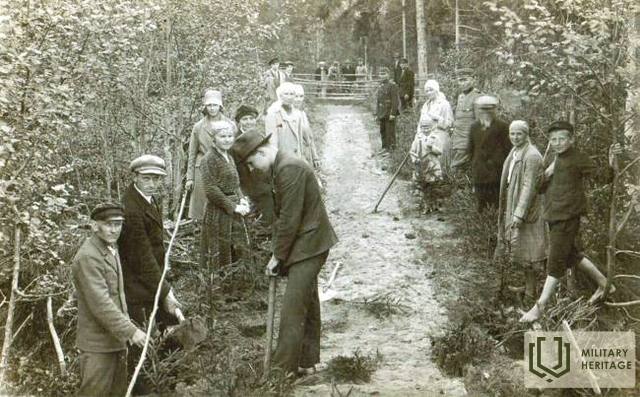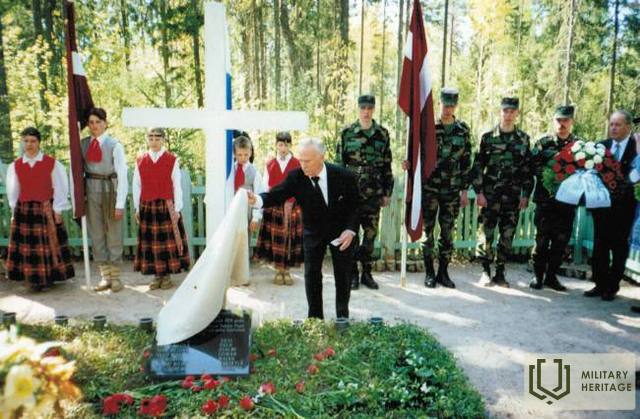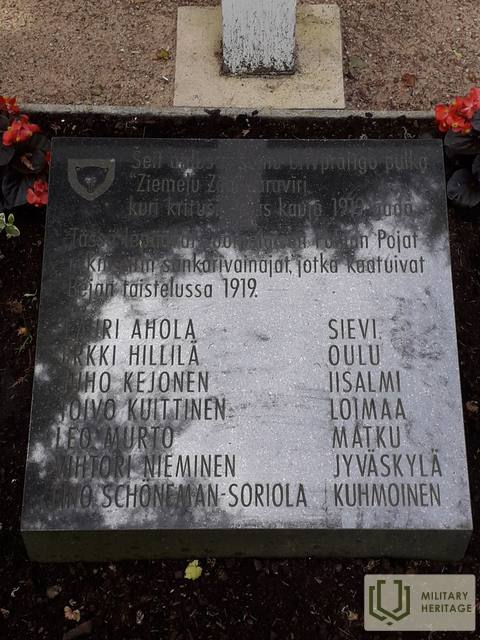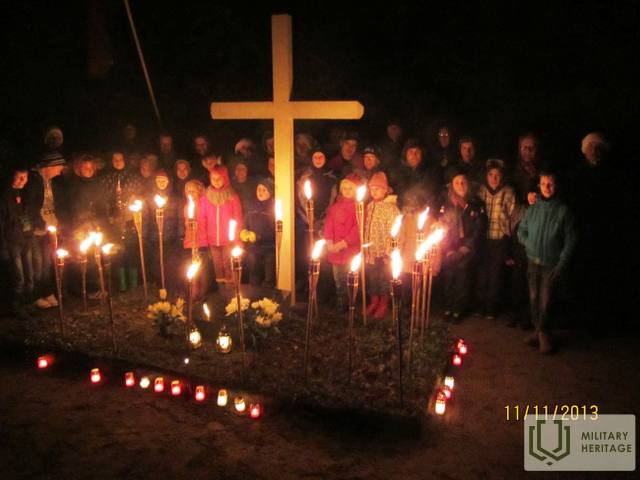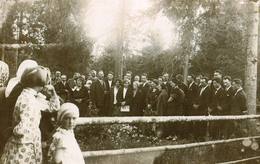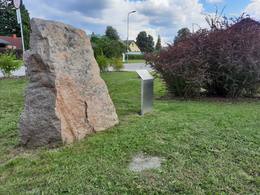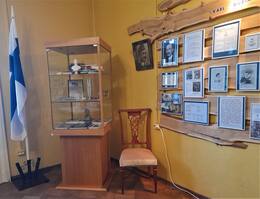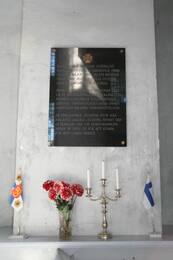Бой финского добровольческого полка «Северные мальчики» в Бее
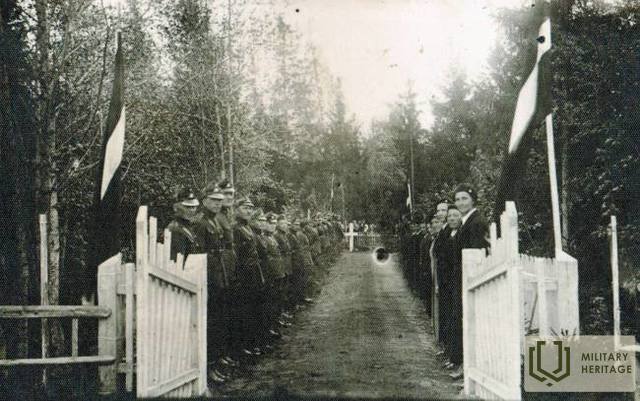
23 февраля 1919 года разведывательный отряд финского добровольческого полка «Мальчики Севера», надеясь получить дополнительное оружие и боеприпасы, прибыл к оврагу Бежа, где произошло столкновение с большевиками (Бабекский бой). В этом бою погибло 10 солдат финского полка.
Во время Освободительной войны брат моей матери, Эйно Сориола, учился в сельскохозяйственной школе Куркиё. Однажды в школу пришли красные и объявили, что собираются убить щенков капиталистов. 22 парня вывели во двор и расстреляли, но брату моей матери и ещё одному парню удалось выжить. Они лежали раненые под грудой тел товарищей. Второго парня, раненого в живот, позже нашли и закололи штыками. Брат моей матери был ранен в лёгкие, сильно обморожен и, скрываясь от поисков два дня, заполз в кучу навоза и согрелся гниющим конским навозом. Скрываясь, он добрался до семьи в Кухмо, оккупированном красными. Неподалёку находился противотуберкулёзный санаторий, где он поправил своё здоровье. Здесь Эйно вместе с товарищем тайно собирал у красных информацию, и это было особенно успешно, когда он ходил в баню с… Красные. Калмина был отправлен. Брат его матери, Эйно, действовал в Кухмо на протяжении всей борьбы за свободу, желая отомстить за смерть своих одноклассников, движимый ненавистью. Во время Гражданской войны он участвовал в походах Ауну и Виени, был ранен в великом сражении при Вуоккиниемене 29 сентября 1918 года и, выздоровев, больше не желал идти в эстонские сражения. Но Ханс Кальм отправил брату своей матери, Эйно, письмо, в котором напомнил финским добровольцам об их прибытии и выразил надежду на ответные заслуги в освобождении Эстонии.
Брат матери отправился по Северному пути мальчиков, о котором писал Ханс Кальм. Дядя был командиром пулемётной группы, в битве при Валке получил звание фельдфебеля. Во время марша на Мариенбург, по недостоверной информации, группа из 56 человек добралась до укрытия, где 23 февраля 1919 года был ранен брат матери. Он остался у пулемёта, прикрывая отход остальных раненых на лошадях. Тело дяди не было найдено. Никаких известий о нём также не поступало.
Юхо Каллинен, участвовавший в гражданской войне в Ауну и в Эстонской кампании, рассказал о ранении своего дяди, поскольку они были в одной группе в бою. Дедушка и бабушка пытались узнать хоть что-то о судьбе сына, но все усилия были тщетны. Оказалось, что он погиб в битве при Бабецке и был похоронен вместе с другими павшими финскими солдатами на земле местного крестьянина Берзиньша в Латвии.
Видео о братских могилах финских солдат в Бее и битве при Бабецке. https://www.youtube.com/watch?v=GbN5d9Y5ju8
Рассказ Матти Матинолли о его брате по материнской линии Эйно Шёнемане-Сориоле, погибшем 23 февраля 1919 года в битве при Бабеке (Бежа) и похороненном на кладбище финских солдатских братьев в Беже. Библиотека Бежи.
https://timenote.info/lv/Finnish-Soldier-Grave-of-Bralu-Beja
https://lv.wikipedia.org/wiki/Битва_при_Бехасе
https://www.sargs.lv/lv/starpkaru-periods/2015-01-10/somu-ziemelu-zenu-cinas-latvija#lastcomment
Связанная хронология
Связанные темы
Связанные объекты
Памятный камень финскому добровольческому полку «Мальчики Севера»
Расположен в Алуксне, на улице Янкална 52, недалеко от станции узкоколейной железной дороги Алуксне.
23 февраля 2019 года, в ознаменование столетия Войны за независимость Латвии, по инициативе Ассоциации традиций борьбы за независимость (Финляндия) был создан специальный мемориальный комплекс в честь финских добровольцев, павших за независимость Латвии. Об этих исторических событиях свидетельствуют особый валун и информационная табличка. Памятный камень был доставлен в Алуксне из Финляндии – линии Салпа, построенной в 1940–1944 годах для защиты восточной границы Финляндии. Линия Салпа протяженностью 1200 км является одним из самых значительных оборонительных рубежей независимой Финляндии, а также одним из самых мощных и хорошо сохранившихся оборонительных сооружений такого типа в Европе после Второй мировой войны.
Камень, привезённый в Алуксне, символизирует борьбу двух народов – финнов и латышей – за свою независимость. Финский добровольческий полк «Мальчики Севера» отправился помогать латышам защищать свободу молодого Латвийского государства. 21 февраля 1919 года «Мальчики Севера» участвовали в ожесточённых боях в районе Алуксне (Мариенбурга). После пятичасового боя у железнодорожной станции Алуксне финны заняли Алуксне. В этом бою погибло 23 финских добровольца, многие были ранены.
Коллекции музея Априки и места деятельности красных партизан
В усадьбе находится музей, экспонаты которого рассказывают о древней истории края.
В музее представлена экспозиция о финском военном деятеле Карле Густаве Маннергейме – 175 музейных предметов, интерактивный стенд «К.Г.Маннергейм и Априки» (на трех языках – латышском, английском и финском) с 6 разделами – об усадьбе Априки, о К.Г.Маннергейме. как полководец в Зимней войне, как вождь сражений за свободу Финляндии и о его связи с априкаями.
В музее также представлены предметы времен Второй мировой войны с символикой немецкой и Красной Армии, а также карта - районы деятельности красных партизан и описания красных партизан.
Ансамбль здания усадьбы Априкку (Априккен) в стиле барокко образовался у реки Алоксте в 18 веке. сначала. 20 век в начале владельцем усадьбы является Карл Густав Маннергейм, впоследствии ставший президентом Финляндии, и известен как автор легендарной линии Маннергейма - системы укреплений во время Зимней войны.
Мемориальная доска финским егерям в Свято-Троицком соборе в Лиепае
Мемориальная доска, посвященная финским егерям, находится в Лиепайском Свято-Троицком соборе по адресу Lielā iela 9.
Финские егеря были подразделением Германской империи, сформированным из добровольцев из Финляндии, которое под названием 27-го Королевского прусского егерского батальона участвовало в боях Первой мировой войны на Восточном фронте в Латвии в 1916-1917 годах.
Во время Первой мировой войны Великое княжество Финляндское входило в состав Российской империи, и многие финны желали победы Германии в войне, чтобы способствовать созданию независимого государства. 20 ноября 1914 года в Хельсинки было основано Движение за независимость Финляндии, которое также планировало сформировать вооруженные силы независимого государства. Когда в январе 1915 года правительство Германии подтвердило свою готовность обучать финнов, начался набор добровольцев, и к весне 1916 года почти 2 000 солдат были расквартированы в Германии и получили название 27-го Королевского прусского егерского батальона.
С июня 1916 года батальон находился на Рижском фронте, после чего был переведен в Лиепаю до марта 1917 года. После Февральской революции Российская империя начала распадаться, и 6 декабря 1917 года парламент Финляндии провозгласил независимость.
13 февраля 1918 года батальон присягнул на верность Финляндии в церкви Святой Троицы в Лиепае. 15 февраля 1918 года батальон покинул порт Лиепая, чтобы вернуться домой в порт Васа и принять участие в гражданской войне в Финляндии против красных, устроивших государственный переворот 27 января 1918 года. Хорошо обученные и опытные в боях егеря составили ядро финской национальной армии, и многие из них стали командирами во время Второй мировой войны.
Флаг батальона, освященный в церкви Святой Троицы, стал первым флагом независимой Финляндии.




